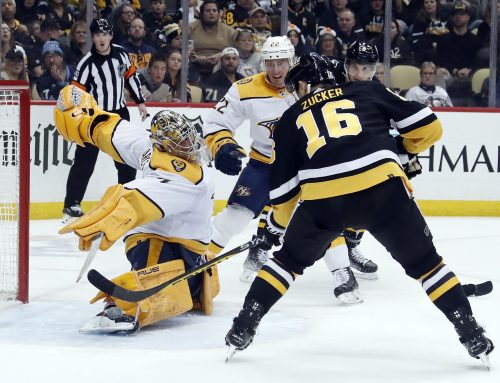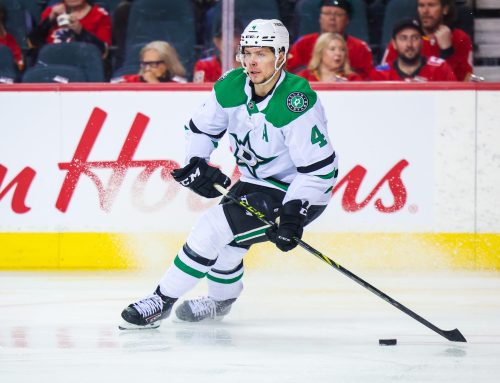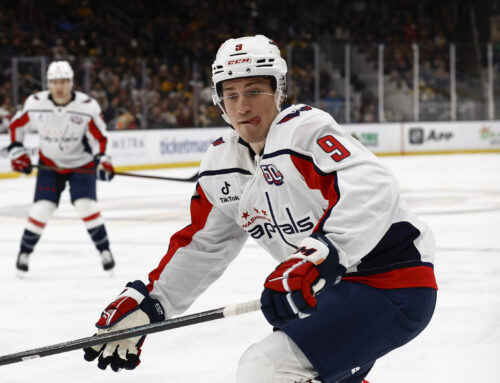
Strategies for finding injury replacements in your cap league…
The first full season of the new NHL collective bargaining agreement (CBA) has been an unusual one for all fantasy hockey managers. Some of the rule changes have accelerated player movement as teams adjust to the new landscape. This season we have seen examples of retention of salary facilitating some trades that would not have happened under the old CBA. This includes the unexpected trade of Roberto Luongo to the Florida Panthers. The fantasy implications were massive as Tim Thomas was immediately out as number-one goaltender in Florida while the young Eddie Lack became the new man in Vancouver.
In salary cap leagues the impact of the new rules has been even more significant. With fewer cap dollars available and no rollback on existing deals some players were forced to take pay cuts. This had the effect of creating cap bargains that can provide excellent value to your fantasy squad. In turn, this development also made some of the older inflated contracts a tougher pill to swallow.
However, the effect of the new CBA extends far beyond just the individual value of players. Two weeks ago we looked at the impact of the lower cap ceiling on the quality of unclaimed free agents in one of my head-to-head dynasty leagues, the UHL which is composed mostly of forum regulars and staff members of this website. The tighter financial climate resulted in many productive players, most of them highly-paid veterans, remain on the waiver wire as teams opted for cheaper alternatives to round out their rosters.
Last week we looked at how the new rules affected the trade market in the same dynasty league. The aforementioned difficult cap climate made it much more difficult to complete trades because most teams, even the non-contenders, entered the season with little or no free cap space. When trades were completed it often included a player thrown in simply to even out the salaries on both sides. This remained a problem until some season-ending injuries gave teams some free space to go out and make some trades.
Before we go any farther, here is the breakdown of the league in question:
United Hockey League (dynasty) – currently in the final round
Scoring setup: Head-to-Head
Teams: 24
Pro Rosters: 23 + 4 IR (3LW, 3C, 3RW, 3F, 6D, 1G, 4BN)
Farm Rosters: 27 (max 160 GP for farm eligibility) + one-year protection for newly-drafted prospects
Categories: G, A, +/-, PIM, SOG, GWG, PPP, SHP, Hit, Blk, FOW, W, GAA, SV, SV%, SO
Salary Cap Ceiling: same as NHL
The deeper you are in the season the more you get long-term injuries that spill into the offseason. And in most leagues that means the player is no longer on your cap payroll. In this league the injuries helped intensify the movement at the trade table. Not only were teams able to legally complete trades without adding a buffer player to even out salaries, but the fallen talents also created a demand to replace the lost production heading into the playoffs.
When injuries open up some cap space on your roster there are two ways to immediately acquire talent: trading and the waiver wire. The trade route is obvious but the waiver wire is also very interesting because its appeal varies based on the league you are in. Basically, the better the players available on the wire, the more appealing this option becomes.
Recall this dynasty league's current free agents list posted two weeks ago:
|
Player |
Position |
Score |
Cap Hit |
|
Elias, Patrik – NJ |
C,LW,F |
839 |
5,500,000 |
|
Umberger, R.J. – CBJ |
LW,F |
767 |
4,600,000 |
|
Wisniewski, James – CBJ |
D |
760 |
5,500,000 |
|
Timonen, Kimmo – PHI |
D |
759 |
6,000,000 |
|
Vlasic, Marc-Edouard – SJ |
D |
745 |
4,250,000 |
|
Campbell, Brian – FLA |
D |
710 |
7,142,875 |
|
Jackman, Barret – STL |
D |
666 |
3,166,667 |
|
Coburn, Braydon – PHI |
D |
664 |
4,500,000 |
|
Regehr, Robyn – LA |
D |
621 |
3,000,000 |
|
Zubrus, Dainius – NJ |
C,RW,F |
620
📢 advertisement:
|
3,100,000 |
|
Tyutin, Fedor – CBJ |
D |
620 |
4,500,000 |
|
Boyle, Dan – SJ |
D |
617 |
6,666,667 |
|
Korpikoski, Lauri – PHO |
LW,F |
614 |
2,500,000 |
|
Cole, Erik – DAL |
RW,F |
608 |
4,500,000 |
|
Alzner, Karl – WAS |
D |
604 |
2,800,000 |
|
Ference, Andrew – EDM |
D |
588 |
3,250,000 |
|
Quincey, Kyle – DET |
D |
584 |
3,775,000 |
|
Laich, Brooks – WAS |
C,F |
577 |
4,500,000 |
|
Stuart, Brad – SJ |
D |
575 |
3,600,000 |
|
Oduya, Johnny – CHI |
D |
574 |
3,383,333 |
Note: Elias’ score ranks 97th in the league while Oduya is 332nd. There are a total of 552 pro roster positions on the league’s 24 teams.
Given the quality of free agents available in this league it became very appealing to simply add one that fits the payroll. While not as fun, you are also avoiding the need to send assets to your rivals as you make your team better. However, in cap leagues a player's contract length can help or hurt his appeal as some league penalize teams for dropping players before their current contracts expire. Therefore, players with expiring deals become very appealing to teams that are simply trying to temporarily fill gaps.
On the other hand, the trade market allows you to acquire bigger names. Even in cap leagues where the elite own very expensive contracts, the best of the best will always be owned by teams. So if you want to acquire a more permanent upgrade you will have to put some assets on the table to pry one away from a rival. With the cap space that became available there were more trade options that allowed some bigger names to change hands as teams loaded up for the postseason.
How I geared up for the playoffs in this league
For me the bulk of the activity went to the waiver wire. The reason is simple: my team is pushing hard to win and my payroll is always close to the maximum. I also own some solid young players on cheaper entry-level deals including Matt Read (already extended), Danny Dekeyser and Torey Krug among others. Those guys are bound to get paid. This summer, all of the salary cap increase is going to be invested towards keeping the core. This made it an easy decision to stick to expiring contracts on the waiver wire. Ultimately I picked up Brian Gionta and Marek Zidlicky for the playoff run. Their contracts end after this season and they can be dropped without penalty.
I did make a pair of trades leading up to the deadline though. Using some mid-round draft picks as bait I traded Alex Burrows for Joel Ward and then flipped Ward for Matt Cooke. All three are good roto-league players but in the end I saved $2 million on the payroll which will help absorb some painful pay raises throughout the roster over the next year or two.
Closing thoughts
The end result was a trip to the semi-final where I was eliminated. It was a disappointing end to a defense of the 2013 UHL championship. Head-to-head leagues are tough as anything can happen in a short amount of time that decides the match-up one way or the other. The important thing is that my team was still able to go deep in a very competitive league despite some tough injuries to Pascal Dupuis, Marian Hossa and Daniel Sedin while important players like Krug and Derek Dorsett became press box darlings following the NHL's trade deadline. Most importantly, no panic moves were made to try to fix this year. The core remains intact to take more shots at the league championship.
All in all, this was a very bizarre season for a salary cap league. The rule changes made it very difficult and frustrating at the trade table which is where we usually have the most fun. Hopefully the salary cap increase will help move things along more easily next year. In this particular dynasty league it will be interesting to see how much of the upcoming cap increase will be put towards acquiring some of the better waiver wire talents which will then free up some more appealing cap bargains to be picked up throughout the season.
How did you fare on the trade front in your salary cap league? Were you able to overcome the trading difficulties if they existed in your league to make some significant moves?
Follow me on Twitter @DH_EricDaoust





 EDM
EDM FLA
FLA MIN
MIN L.A
L.A TOR
TOR NYI
NYI DAL
DAL S.J
S.J COL
COL PHI
PHI
